 We are still in the second longest economic recovery period ever in this country, approaching 90 months. On top of that, at 74 months, the U.S. is enjoying what is now the longest stretch of consecutive monthly job creation on record. The recovery has been solid, with about 15 million jobs created, and 11 million of those new jobs. In September, we reached a record low level of layoffs and discharges of 1 percent according to the Bureau of Labor Statistics. Yes, workers are finally winning in this economy.
We are still in the second longest economic recovery period ever in this country, approaching 90 months. On top of that, at 74 months, the U.S. is enjoying what is now the longest stretch of consecutive monthly job creation on record. The recovery has been solid, with about 15 million jobs created, and 11 million of those new jobs. In September, we reached a record low level of layoffs and discharges of 1 percent according to the Bureau of Labor Statistics. Yes, workers are finally winning in this economy.
During this current recovery, the U.S. set a record for the most consecutive months of 200,000 or more new jobs created. Since January 2013, almost 9.7 million jobs have been created, averaging 224,000 new jobs each month. And all of this has been done in a time when the public sector hasn’t created jobs at all. From 2010 to 2013, the private sector added about 6.7 million jobs, while the public sector lost around 626,000, which is unprecedented. During President Obama’s two terms, the public sector saw a loss of 341,000 jobs.
The public sector is typically a huge job generator, especially at the federal level. However, because austerity practices have been implemented in an effort to stop adding to the national debt, lawmakers have slowed the hiring of government jobs. Many states aren’t hiring as well.
Some argue that the recovery from the Great Recession has been slow. Well, it wasn’t called the Great Recession for nothing. It should have been called the Great Crater or the Great Abyss. Long-term unemployment rose to historic highs during and after the recession, and the unemployment rate spiked almost to its post-war high.
The recessions in the early ’80s, ’90s or the one in 2001-2002 cannot even remotely be compared to the recession of 2007-2009.
The reason the climb from the crater has taken longer to get to pre-recession peaks is because the low point of the Great Recession was so low. The U.S. is at pre-recession unemployment lows now, at 4.6 percent, but it took 51 months to get there, according to the Economic Policy Institute. In comparison, the recession of the early 1980s took 11 months to reach pre-recession peaks, and the recession in the early 1990s took 23 months.
Yet, today, from an economic development perspective — at least here in the South — project activity is better than any time since this magazine began charting that activity in 1992. There were 730 projects meeting or exceeding 200 jobs and/or $30 million in investment in 2015, and 668 in 2014, both records. The last time you saw a year like that was in 1997 when 636 projects meeting or exceeding our thresholds were announced in the South.
As for corporate investment, some say it is declining. In fact, it is leveling off. The truth is that in Quarter 3 of 2015, a record $2.217 trillion was invested by private corporations in the U.S., according to Commerce. In Quarter 3 2016, that investment fell to $2.19 trillion, which is not far off the record set last year. So, corporate investment has stabilized near record totals.
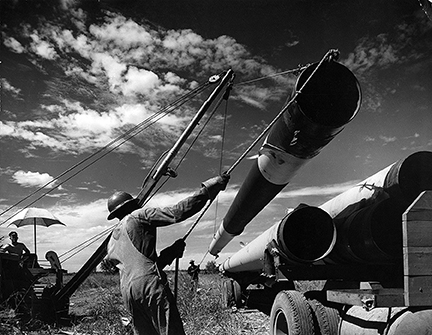 Furthermore, in 2015, the largest 100 projects in the South had a total investment of $90.5 billion, easily breaking the then 23-year record set in 2014 of $78.2 billion. My question is, how can business investment be off when billions are being spent on new and expanded petrochemical plants in Texas, Louisiana and elsewhere? We are in the midst of the largest build-out of chemical plants since World War II.
Furthermore, in 2015, the largest 100 projects in the South had a total investment of $90.5 billion, easily breaking the then 23-year record set in 2014 of $78.2 billion. My question is, how can business investment be off when billions are being spent on new and expanded petrochemical plants in Texas, Louisiana and elsewhere? We are in the midst of the largest build-out of chemical plants since World War II.
The hundreds of massive petrochemical plants that have expanded or been built — or are under construction now — are the result of widespread fracking that began in the U.S. in the late 2000s. On average, the cost of natural gas to run a petrochemical plant in much of the U.S. is a third of costs in Europe, and even lower compared to Asia.
Furthermore, spending by the automotive industry — the second-most investment intensive sector aside from petrochemicals — has also been remarkable over the last few years in the Midwest and South. With the exception of one, every major automotive assembly plant in the South has seen automakers spending hundreds of millions, if not billions, on expansions since the recession ended. There is no question that the petrochemical and automotive industries led the South out of the recession.
In short, we have seen a remarkable climb out of the crater called the Great Recession, and it continues today. But, I hate to tell y’all this: The U.S. economy and the South’s economy are about to slow down, maybe noticeably, if there are pulls on the economy outside of labor. . .inflation for instance. And it’s not because of a new administration.
What is happening, without question, is that we are running out of labor, this country’s most prized economic asset. Sure, there is still some slack in the labor market, and there are millions of workers in the U.S. who can’t find a job, can’t find the right job, or are unwillingly working part-time. However, the long party of job generation of 200,000 or more each month may be over. . .and that’s not such a bad thing.
WORKER PARTICIPATION
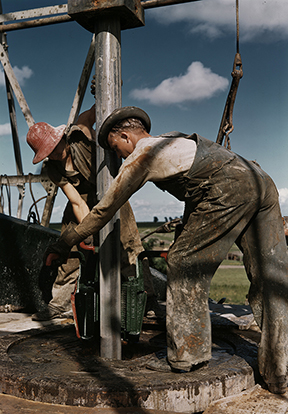 Before I make my case that we are running out of labor, let’s address the issue that centers on the 35 percent of workers who are not participating in the workforce, yet are eligible, according to the government. Politically, this is a hot-button issue. If you are the voting block that doesn’t think the current economy is so great, you point to the labor participation rate. There is nothing wrong with that, but the fact is, there are 5.5 million jobs in this country that are available almost on a daily basis. There are more than 1 million jobs that remain unfilled in the tech sector. The jobs are there, the takers aren’t. Why?
Before I make my case that we are running out of labor, let’s address the issue that centers on the 35 percent of workers who are not participating in the workforce, yet are eligible, according to the government. Politically, this is a hot-button issue. If you are the voting block that doesn’t think the current economy is so great, you point to the labor participation rate. There is nothing wrong with that, but the fact is, there are 5.5 million jobs in this country that are available almost on a daily basis. There are more than 1 million jobs that remain unfilled in the tech sector. The jobs are there, the takers aren’t. Why?
In addition, some claim the current 62.9 percent labor force participation rate is far and away the lowest in the nation’s history. Nothing could be further from the truth. In 1970, the labor participation rate was 60.4 percent. At no time since has it ever risen above 67.1 percent.
It should also be noted that over the last year, the civilian labor force climbed nearly 2 percent, a very strong pace. That growth came from workers reentering the workforce. And the prime-age (25 to 54 years) participation rate has surged to 81.5 percent, the highest in nearly three years.
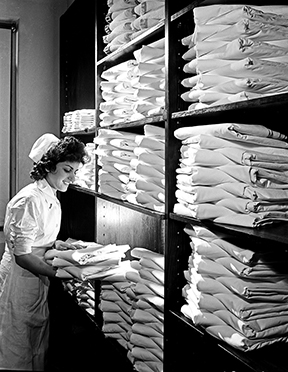 There are all kinds of reasons why people don’t seek work. Some are lazy, some are crazy, or both. Many are disabled. Some are recently retired but are still being counted as work eligible. Thousands join the military every year or go to prison and are still counted as work eligible. And millions more are currently in high school or in college and are counted as outside the labor force, or not participating.
There are all kinds of reasons why people don’t seek work. Some are lazy, some are crazy, or both. Many are disabled. Some are recently retired but are still being counted as work eligible. Thousands join the military every year or go to prison and are still counted as work eligible. And millions more are currently in high school or in college and are counted as outside the labor force, or not participating.
Many don’t want to work and would rather take their legal and rightful federal assistance. If you are a single mother of four, say, and can’t find a job that pays as much as what you get from available federal programs that address poverty, who wouldn’t take what is legally available to them?
For those who get angry at that, then encourage the politicians who represent you to change the laws. But it needs to be understood that many people in that group have decided to stay home and take care of family, both young and old. If they could earn a job that pays enough to afford a sitter to take care of their loved ones, they would do it. Otherwise, they won’t.
And then there is the group that can’t pass a drug test when applying for a job. In decades past, prospective employees didn’t have to take drug tests to earn a job. Today, it’s almost mandatory because of insurance regulations.
There is a scourge of opiate and meth use in this country, with millions of people unable to pass a drug test when applying for a job. Not only that, smoking one joint while on a weekend fishing trip can actually keep you from getting a job, or, worse yet, get you fired. With several states legalizing marijuana, that should stop, but the insurance industry needs to lead that change.
It’s sad, but it is a fact that drug use is part of the reason so many people don’t participate in the workforce. According to many polls/studies, drug use in the U.S. is at an all-time high. That’s a big part of the work-eligible, participation problem. What’s the point in applying for a job, when many think, “I won’t pass the drug test?”
Worker non-participation rates will rise in years to come
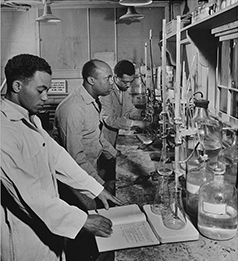 A new Labor Department study came out in the fall quarter. It highlighted projections of the labor force through 2060. The “labor force” is defined as those people who are 15 to 65 years old, either holding a job or actively seeking a job.
A new Labor Department study came out in the fall quarter. It highlighted projections of the labor force through 2060. The “labor force” is defined as those people who are 15 to 65 years old, either holding a job or actively seeking a job.
Today, there are about 95 million people in this country outside the labor force. The Labor Department’s study shows that segment will grow to 101 million people by 2020. The study also predicts that by 2060, those not in the labor force who are eligible for work will grow to about 140 million. In other words, the worker participation rate will grow, but not nearly as fast as the population ages out of that segment.
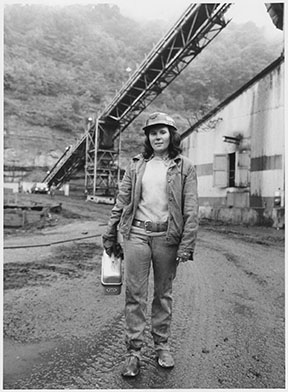 Of course, those figures are simply projections by the Labor Department. Depending on the quality of the economy, the worker participation rate could grow if more money can be earned in a job than would be paid by the government to a non-participating person for not working. In a smoking-hot economy, more good jobs will be available, but at the same time, more people will go ahead and retire because they can.
Of course, those figures are simply projections by the Labor Department. Depending on the quality of the economy, the worker participation rate could grow if more money can be earned in a job than would be paid by the government to a non-participating person for not working. In a smoking-hot economy, more good jobs will be available, but at the same time, more people will go ahead and retire because they can.
There are things that federal and state governments can do to help grow the worker participation rate. Reforming disability and welfare programs could raise the participation rate, but politically speaking, that’s like turning around an aircraft carrier. More jobs and better pay, which is actually occurring this year for the first time in years, will grow participation. Workers are seeing real wage gains. Because of that, more and better jobs will entice some retirees to return to the workforce. But there are other critical factors working against the labor force.
The fact of the matter is that the growth of the working age population (between 16 and 65) is slowing and slowing dramatically. Demographic math is cutting into our available workforce. For example, from the 1970s to the 1990s, the standard for job growth in this country was 150,000 jobs per month. That was the standard used by economists. Anything above 150,000 jobs created per month was a strong month and anything below 150,000 jobs created per month caused the jobless rate to go up.
But from the 1970s to the late 1990s, the working age group (16 to 65 years) was increasing on average of about 200,000 people a month nationally. That same working age population rose at just 71,000 per month over the past two years. And the Census Bureau reported in the fall quarter that the working age population will grow by an average of just 50,000 per month over the next 15 years. Shocking.
So, 20 years ago, 200,000 people became work eligible each month, but now only 71,000 per month become work eligible in this country. So, when we were averaging over 200,000 new jobs each month over the past four years, one can easily see how the unemployment rate dropped from about 10 percent during the recession to 4.6 percent today. We were creating many more jobs compared to the number of people entering the workforce.
Today, you can throw away that standard number of needing 150,000 new jobs per month in this country. To absorb the current slower growing population, we only need to create about 50,000 jobs per month to sustain a healthy economy. And in a few years, that will drop to 33,000 new jobs per month.
Officially the U.S.’s “U-3” unemployment rate is 4.6 percent, or close to full employment. Many economists, even ones at the Federal Reserve, believe that a national unemployment rate of 4.8 percent brings us to full employment. The U-3 is defined as “total unemployed, as a percent of the civilian labor force.” However, a broader look at unemployment can be seen in the “U-6” rate. The U-6 is defined as all unemployed, plus “persons marginally attached to the labor force, plus total employed part-time for economic reasons, as a percent of the labor force.” That would include the underemployed. The U-6 rate as of this November was at 9.3 percent, above pre-recession levels. There is your slack in the labor force, meaning there are still gains to be had, albeit small ones.
How can we eke out more from the labor force that we have?
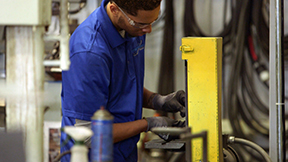 The existing slack in the labor force just happens to be the toughest group to employ. Many of the unemployed are unskilled, and leaders in economic development know that. That’s why there is a Herculean effort going on right now in Southern states, counties and cities to train workers for today’s jobs. Even in a situation where labor is in short supply, a more productive existing employee can make a big difference in the economy. Workforce training can make employees much more productive, and there are new programs all over the South that are re-creating our educational system. The four-year model that has been in place for years is being replaced somewhat by the two-year model.
The existing slack in the labor force just happens to be the toughest group to employ. Many of the unemployed are unskilled, and leaders in economic development know that. That’s why there is a Herculean effort going on right now in Southern states, counties and cities to train workers for today’s jobs. Even in a situation where labor is in short supply, a more productive existing employee can make a big difference in the economy. Workforce training can make employees much more productive, and there are new programs all over the South that are re-creating our educational system. The four-year model that has been in place for years is being replaced somewhat by the two-year model.
One such effort can be found in Memphis where noted workforce development guru Dr. Glen Fenter heads up the Greater Memphis Alliance for a Competitive Workforce (GMACW, or “G-MAC”). Fenter and Memphis’ approach to job training is done through a demand driven model. “There is absolutely no reason why most of our students across the country should not be graduating from new models that compress the last years of high school with the first years of college,” Fenter said. “Walking across the graduation stage with a meaningful portfolio of employer driven skills that can lead to immediate employment in areas of high demand or shortened post-secondary educational requirements, or both, is so important today.”
The Trump effect
How will the current tight labor market affect President-elect Donald Trump and his plans for the economy? If President Trump implements several of his campaign promises, like deporting millions of illegal aliens and putting a severe cap on immigration, the current tight labor market will tighten even further, if not simply vaporize altogether.
Ironically, some new manufacturing projects destined for the U.S. will choose Mexico because that country can serve our market easily and can backfill labor for decades to come. Some site selection consultants have told me that because of our aging population, the U.S. can’t compete with Mexico in backfilling labor 20 years or more out. Simply put, Mexico’s demographics are much younger than the United States’.
While Forbes publisher Rich Karlgaard wrote this summer that America holds cards that are like a “royal flush” regarding its economy as a result of cheap and abundant energy, low real estate costs, the world’s best research universities and global leadership in digital technology, all of that will not keep this economy going without the labor that is necessary. We have been successful bringing manufacturing and other sectors back from China simply because it is cost-effective to do so. But China and Mexico remain two countries that can backfill labor decades longer than we can at this time.
Trump has set some big goals for the economy. He has promised to create 25 million jobs over 10 years. That’s more than double what was created under Obama, and more than in Ronald Reagan or Bill Clinton’s terms. But where will that labor come from? It apparently won’t come from immigrants, and if he deports large numbers of people living in this country, we will see labor force reductions.
Trump repeated in his victory speech what he had said many times while campaigning. Mr. Trump has plans for rebuilding infrastructure, and the way he explains his plans, he means everything. “We are going to fix our inner cities and rebuild our highways, bridges, tunnels, airports, schools, hospitals,” he said in his victory speech. “We’re going to rebuild our infrastructure, which will become, by the way, second to none. And we will put millions of our people to work as we rebuild it.”
We agree with President Trump’s proposed investments in infrastructure improvements. Hillary Clinton also backed a big infrastructure stimulus and the idea would likely win bipartisan support if the funding is widely dispersed. But with a labor market as tight as this one, can it be done?
We wrote back in 2008 that such an infrastructure plan would be great timing, since the country was hemorrhaging hundreds of thousands of jobs a month. Large investments in infrastructure improvements during the Great Recession would have created millions of high-paying jobs. Whether we could have afforded it or not was the question at the time.
“The opportunity that our country has to simultaneously rebuild our infrastructure, grow our economy and connect our current and future workforce to transformative educational opportunities is unprecedented in recent history, and undeniably essential to preserving our Democracy,” Fenter added. “The problem is that most of our current political policy and resulting educational practice is focused on essentially everything else but maximizing that opportunity. Hopefully, a Trump administration will recognize the need for fundamental change in these patterns.”
As for Trump’s other economic policies, there is not much he has revealed. Federal Reserve policymakers and other analysts, including Wall Street economists, were all predicting GDP growth of around 2 percent and unemployment below 5 percent for several more years. But that was based on policies of President Obama, with Hillary Clinton essentially continuing those policies. Most economists were not expecting a Trump victory.
Trump has maintained he can raise GDP growth to the 4 percent range, but has not given specifics. That being the case, those analysts have no idea how Mr. Trump expects to get that kind of white-hot growth and how he can do it during full employment, so they may as well just throw away their forecasts. We are certainly wading into uncharted waters with President-elect Trump. But that is okay. When there is a new president, there is always uncertainty.
Conclusion
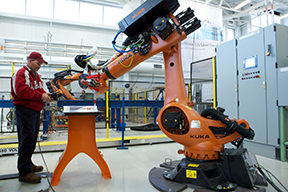 Maybe public sector jobs via a large federal infrastructure stimulus is just what we need to get a significant portion of those 95 million people not participating in the workforce to contribute to the economy. Yet, history has shown that this country has never reached 70 percent of eligible workers to participate in the workforce. Even if we reached 70 percent, that would put only 4.75 million workers back into the workforce who currently are not participating.
Maybe public sector jobs via a large federal infrastructure stimulus is just what we need to get a significant portion of those 95 million people not participating in the workforce to contribute to the economy. Yet, history has shown that this country has never reached 70 percent of eligible workers to participate in the workforce. Even if we reached 70 percent, that would put only 4.75 million workers back into the workforce who currently are not participating.
Again, the only way to grow the workforce in dramatic fashion is to grow the legal, permanent immigrant resident’s population, and of course, have a baby boom. Currently, the U.S. is approving about 1 million legal permanent residents a year. That is surely going to slow based on President Trump’s stated policies.
It’s likely that the days of hot labor market data of 250,000 to 300,000 monthly job gains are over. Sure, there will be some outlier months where you might see 250,000 or more jobs created. But unless we see large influxes of immigrants, the labor market will remain tight and millions of jobs will go unfilled.
Almost every economist agrees there has been a slowdown in the growth of the labor force over the last decade. Where do we go from here? Manage the economy so that the job market remains vibrant, but doesn’t overheat. Of course, an economic slowdown would free up labor, but we don’t see that at this time.
I really don’t like writing this, but I believe the labor force in this country needs to be maintained, not necessarily expanded in great numbers, for many years to come. The data shows us that the workers are simply not there. And that’s not such a bad thing. Yet, moving from 200,000 a month in new job generation to 50,000 to 75,000 a month will need some getting used to.